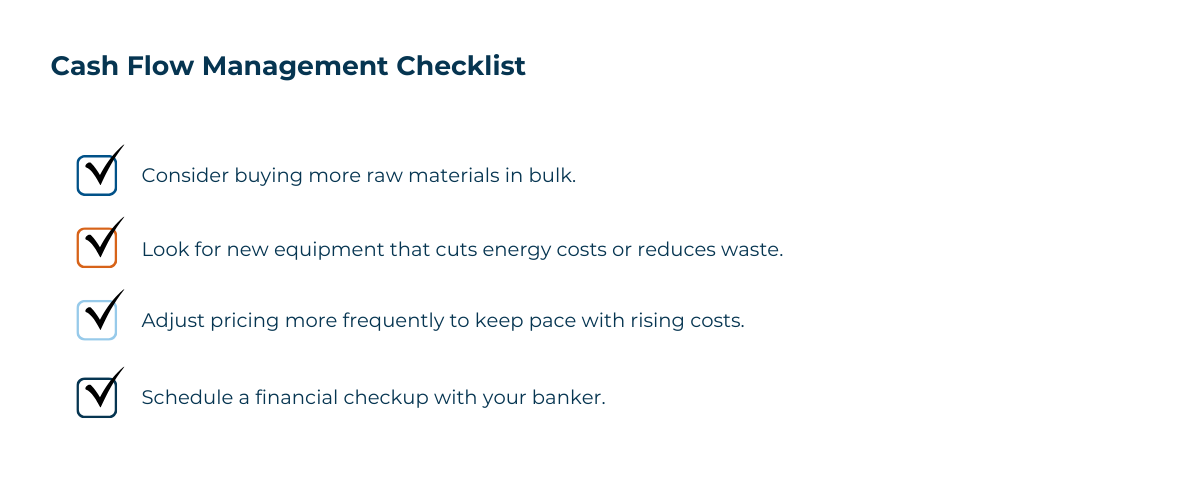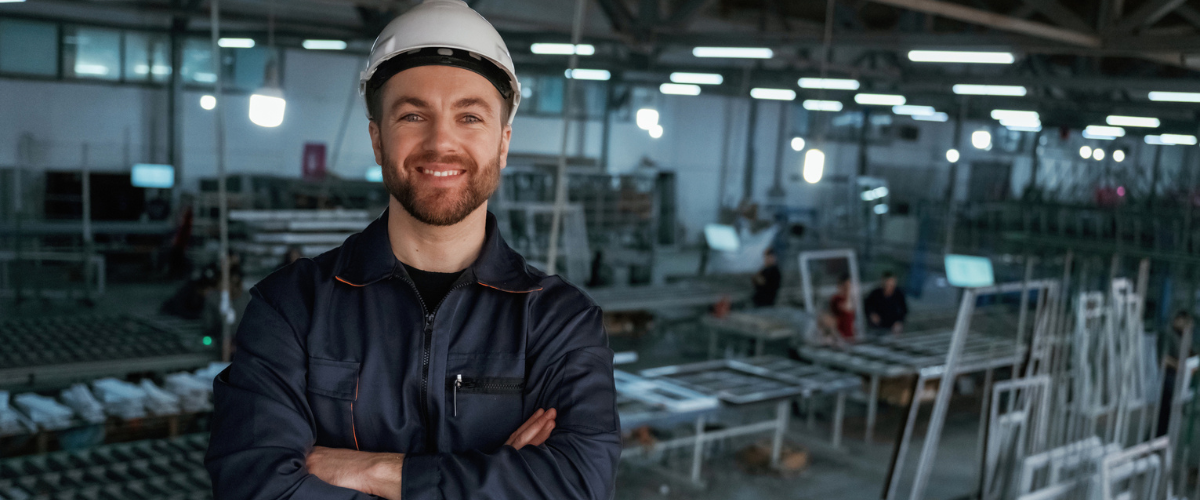It's easy to feel like a domino in a long chain of rising costs: a price hike in raw materials from a supplier, a jump in shipping rates and a competitive labor market all pushing on your bottom line. But you don't have to fall to these pressures. Instead, you can turn external factors into efficiencies.
We'll explore practical strategies that you can use right now, from making smarter purchasing decisions to optimizing production processes, to help you manage your cash flow and build a more profitable, stable business.
Strategies for a More Resilient Factory
Small factories are under financial pressure from more than just the rising cost of raw materials. While a spike in the price of lumber, steel or plastic is an immediate concern, owners are also facing significant increases in labor costs, real estate taxes and insurance premiums. These rising expenses on all fronts can drastically reduce profitability, especially for factories that rely on high-volume production with smaller margins.
But, the most successful small business factory owners aren’t just sitting back and hoping prices go down; they’re taking decisive action and changing the way they operate. By focusing on what you can control, you can create stability and predictability in a fluctuating market. Here are key strategies to consider:
- Optimize Your Inventory: The recent supply chain disruptions showed us that relying on a smaller inventory can be risky. Today, many factory owners are making a strategic shift. They’re buying more raw materials at once to lock in a good price and protect themselves from future price hikes. This is one of the best ways to increase cash flow by creating predictability for your budget and ensuring that you won't have to halt production. This also gives you the leverage to shop around. Actively seeking out new vendors can lead to better prices and terms, helping you keep costs in check and improve your small business margins.
- Invest in Efficiency: A focus on efficiency is one of the most powerful ways to improve cash flow. Finding ways to create efficiency on the factory floor will help you work smarter and not harder. Many owners are making tough but wise decisions, like investing in new, more energy-efficient equipment. While it’s a big expense upfront, these machines often pay for themselves over time by cutting utility costs and speeding up production. You can also look at your processes and your people. Providing in-depth training can lead to fewer errors and increased productivity, which are core strategies to increase profitability.
- Review Your Products and Pricing: Instead of raising prices once a year, consider adjusting your pricing more often to keep pace with expenses. You can also use this opportunity to perform a strategic review of your product lineup. By identifying and cutting the least profitable items, you can focus your time, energy and resources on the products that are actually building your bottom line. This is a powerful part of small business money management and a critical step toward achieving a good profit margin for small business.

Look at Tailored Financing and Cash Flow Solutions
When you need capital, your community bank has flexible financing solutions tailored to your needs. Here are several tools that can be used to manage cash flow and invest in growth.
- Operating Lines of Credit: This is your key tool for day-to-day operations. As your factory's sales and inventory increase, a line of credit tied to those assets can grow with you. This gives you the ability to buy materials and keep production going while you wait for customers to pay, making it one of the best ways to increase and optimize cash flow.
- Equipment Financing: For a factory, a new machine is often the key to greater efficiency. Equipment financing is specifically for purchasing that new piece of equipment. This allows you to upgrade your technology and improve production without tying up your cash.
- SBA Loans: The Small Business Administration (SBA) offers government-backed loans that are ideal for manufacturers. SBA loans often come with longer repayment terms, which makes them a great option for major investments like buying your own building, expanding your facility or getting that long-term machine you've had your eye on.
- Real Estate Loans: If you're looking to purchase your own building or expand your current facility, look into a real estate loan. Owning the property can help you lock in occupancy costs and start building equity, creating a valuable long-term asset for your business.
- Accounts Receivable Financing: When a big customer takes 60 or 90 days to pay, using this type of financing can be a powerful tool for improving short-term cash flow. With this financing, you can get an advance on your unpaid invoices, giving you immediate cash to cover payroll or other expenses while you wait for customer payments.
Build Your Financial Support System
Your banker is more than a lender; they’re a trusted advisor who can offer a second set of eyes on your business’s financial health. Don’t hesitate to reach out to your commercial banker when things are getting tough. Your bank is there to help you succeed. The minute you start feeling the pressure, pick up the phone and start a conversation.

They will review your financial statements and conduct a thorough cash flow analysis to see where your margins are being squeezed and how your cash flow is holding up. This is a crucial part of small business forecasting. Your banker can help you understand how to forecast cash flow to make more informed decisions, giving you a clear picture of your financial future.
Navigating rising costs can be tough, but it’s a challenge you can overcome. By taking proactive steps now you can implement powerful
cash flow management strategies and find the financing solutions you need.


